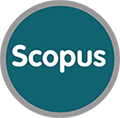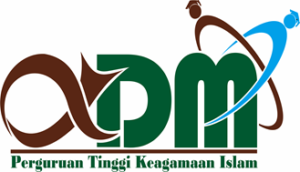Optimization of Pertamax Fuel Distribution Using Clarke-Wright Savings, Nearest Neighbour, and Goal Programming (Case Study: Malang City)
Abstract
Keywords
Full Text:
PDFReferences
[1] F. Wahyuni, “Kualitas Pelayanan PT Pertamina Meulaboh Dalam Penyaluran Bahan Bakar Minyak (BBM) Di Meulaboh,” J. Akunt. Manaj. dan Ilmu Ekon., pp. 268–273, 2022.
[2] B. P. Statistik, “Jumlah Kendaraan Bermotor Menurut Provinsi dan Jenis Kendaraan (unit),” 2023. https://www.bps.go.id/id/statistics-table/3/VjJ3NGRGa3dkRk5MTlU1bVNFOTVVbmQyVURSTVFUMDkjMw==/jumlah-kendaraan-bermotor-menurut-provinsi-dan-jenis-kendaraan--unit---2023.html (accessed Jan. 10, 2025).
[3] K. ESDM, “Pertalite, BBM Yang Paling Banyak Dikonsumsi Masyarakat,” 2022. https://www.esdm.go.id/id/media-center/arsip-berita/pertalite-bbm-yang-paling-banyak-dikonsumsi-masyarakat (accessed Jan. 10, 2025).
[4] Kompas, “Nasib Pertamax Eceran, Selisih Seribu Rupiah Tapi Tetap Dibeli Mereka Yang Ogah Antre Di SPBU.” https://megapolitan.kompas.com/read/2022/04/07/15002261/nasib-pertamax-eceran-selisih-seribu-rupiah-tapi-tetap-dibeli-mereka-yang (accessed Jan. 10, 2025).
[5] S. Elatar, K. Abouelmehdi, and M. E. Riffi, “The Vehicle Routing Problem in The Last Decade: Variants, Taxonomy and Metaheuristics,” Procedia Comput. Sci., vol. 220, pp. 398–404, 2023, doi: 10.1016/j.procs.2023.03.051.
[6] M. S. Anggraeni, O. N. Tazkiya, E. Mawandi, and H. S. Amarilies, “Optimization of Fuel Distribution Routes for Green Logistics in Multi Compartment Vehicle Routing Problem (MCVRP) using Branch and Bound Algorithm (Case Study: Boyolali Fuel Terminal),” pp. 1132–1144, 2023, doi: 10.46254/an13.20230333.
[7] G. Clarke and J. W. Wright, “Scheduling of Vehicles from a Central Depot to a Number of Delivery Points,” Oper. Res., vol. 12, no. 4, pp. 568–581, 1964, doi: 10.1287/opre.12.4.568.
[8] J. Šedivý and J. Čejka, “Optimisation of distribution routes for branch office of česká pošta, s.p. (Czech Post),” Transp. Res. Procedia, vol. 53, no. 2019, pp. 252–257, 2021, doi: 10.1016/j.trpro.2021.02.032.
[9] S. Kunnapapdeelert and C. Thawnern, “Capacitated vehicle routing problem for thailand’s steel industry via saving algorithms,” J. Syst. Manag. Sci., vol. 11, no. 2, pp. 171–181, 2021, doi: 10.33168/JSMS.2021.0211.
[10] F. Tunnisaki and Sutarman, “Clarke and Wright Savings Algorithm as Solutions Vehicle Routing Problem with Simultaneous Pickup Delivery (VRPSPD),” J. Phys. Conf. Ser., vol. 2421, no. 1, 2023, doi: 10.1088/1742-6596/2421/1/012045.
[11] A. H. Taha, Operations Research An Introduction, 10th ed. London.
[12] R. Jia, Y. Liu, and X. Bai, “Sustainable supplier selection and order allocation: Distributionally robust goal programming model and tractable approximation,” Comput. Ind. Eng., vol. 140, no. January, p. 106267, 2020, doi: 10.1016/j.cie.2020.106267.
[13] E. E. Günay, G. E. Okudan Kremer, and A. Zarindast, “A multi-objective robust possibilistic programming approach to sustainable public transportation network design,” Fuzzy Sets Syst., vol. 422, pp. 106–129, 2021, doi: 10.1016/j.fss.2020.09.007.
[14] L. O. D. Munggaran and Z. F. Rosyada, “Pengoptimalan Pola Distribusi BBM Menggunakan Teori Transportasi Dan Metode Stepping Stone Pada PT. Pertamina Patra Niaga Regional Sumatera Bagian Selatan,” Ind. Eng. Online J., vol. 13, no. 4, 2024.
[15] G. Chartrand, L. Lesniak, and P. Zhang, Graphs & digraphs, 6th ed. New York: CRC Press, 2016.
[16] P. Toth and D. Vigo, The Vehicle Routing Problem. Philadelphia: Society for Industrial and Applied Mathematics (SIAM), 2002.
[17] T. Carić and H. Gold, Vehicle Routing Problem. Croatia: In-Teh, 2008.
[18] G. B. Dantzig and J. T. Ramser, “The Truck Dispatching Problem,” Encycl. Oper. Res. Manag. Sci., vol. 6, no. 1, pp. 80–91, 1959, doi: 10.1007/978-1-4419-1153-7_200874.
[19] R. F. Harahap and Sawaluddin, “Study Vehicle Routing Problem Using Nearest Neighbor Algorithm,” J. Phys. Conf. Ser., vol. 2421, no. 1, 2023, doi: 10.1088/1742-6596/2421/1/012027.
[20] S. Mulyono, Riset Operasi. Jakarta: Mitra Wacana Media, 2017.
DOI: https://doi.org/10.18860/cauchy.v10i1.31529
Refbacks
- There are currently no refbacks.
Copyright (c) 2025 Tharisa Melani

This work is licensed under a Creative Commons Attribution-ShareAlike 4.0 International License.
Editorial Office
Mathematics Department,
Universitas Islam Negeri Maulana Malik Ibrahim Malang
Gajayana Street 50 Malang, East Java, Indonesia 65144
Faximile (+62) 341 558933
e-mail: cauchy@uin-malang.ac.id

CAUCHY: Jurnal Matematika Murni dan Aplikasi is licensed under a Creative Commons Attribution-ShareAlike 4.0 International License.




-CAUCHY26.png)
